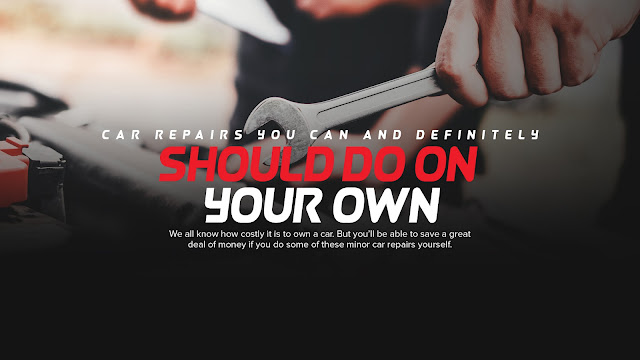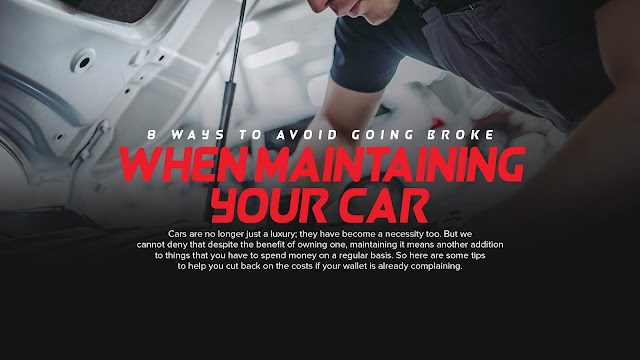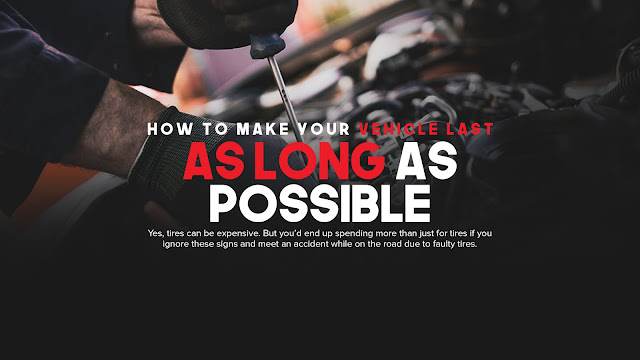We all know how costly it is to own a car. But you’ll be able to save a great deal of money if you do some of these minor car repairs yourself. With the right tool and initiative to learn something new, you can definitely take these on. Just know that when it comes to complex car issues, it’s best to take your vehicle to the experts. So when it comes to your own car, you should spare some time to get to know it and how to fix it when a part of it needs fixing. If you can follow basic instructions in your owner's manual or repair book, you don't have to be mechanically inclined to perform these simple tasks.
Replace Wiper Blades
With a screwdriver and new blades, you can easily replace the old ones, by tilting the wiper arms upwards, in just five minutes. Just follow the instructions on the package and you should be fine.
Making sure you have windshield wipers that are in good condition all the time is vital to your safety on the road because it allows you to have a clear view. Do this at least once a year. It’s not really that complicated to do it and it doesn’t take much time.
Replace Fuse
Check your owner’s manual first to know where to find the fuse box and the type of fuse you’ll need. Using a fuse puller, you can easily do the job. The fuse box cover is usually labelled so you won’t have trouble identifying the circuit.
Replace Light Bulb
Just like the wipers, headlights are important for your safety while driving. Your owner’s manual usually has instructions on how to replace bulbs. Don’t forget to use surgical-type glove when holding the bulbs to prevent premature burnout and possible breakage of the bulb since skin oil will attract heat and could cause those.
It’s basically as simple as replacing a light bulb at home. You won’t need a mechanic for that, do you? Just make sure you buy the same bulb as the old one from a trusted auto parts.
Replace Air Filter
Remove the cover of the filter box using a screwdriver then just lift the filter out.
This is another quick and simple car repair that doesn’t need a seasoned mechanic to accomplish. You can easily see the air filter when you pop the hood so there won’t be a lot of digging necessary. You just have to remove the old filter, clean the inside of the compartment, and then install the one and you’re done. If you had someone else to do this for you you’d be charged around $35. Air filter replacement intervals is typically every 15,000 miles, but you’d have to do it more frequently if you drive in dusty conditions or on dirty roads.
Change Oil And Filter
First of all, different vehicles might have different recommended oil change intervals, it’s best to refer back to your owner’s manual to be certain of yours. If you decide to do an oil change on your own every time, you have to have the basic tools like adjustable wrench, filter wrench (for older cars) and a seal-able container to catch the used oil and buy oil in bulk to save more money.
You would have to refer to the user’s manual with this one too. That will tell you the type of engine oil and recommended capacity. After that prepare your latex gloves, drain pan, funnel, oil filter wrench, and a combination wrench, if your car is a newer model, you’ll be able to get this done in less than 30 minutes. Oil filters of newer cars are more accessible which also means there’s less chances of spill.
Tire Replacement
If there’s one car repair that every car owner should know, that’s changing tires; especially since jack and tire changing tools are provided by most car makers.
Check Radiator Hoses
Always check both the upper and lower radiator hoses to see if they’re both damaged. Radiator hoses are usually just held by screws and clamps, so all you need is a screwdriver.
Check Car Batteries
You’ll know it’s time to have your batteries replaced if it hits only 9.7 volts when starting the engine. You’ll need suitable gloves, eye protection, and a voltmeter for this car repair.
Before you touch anything, make sure you know how to disconnect the old one and connect the new one. Possible reasons for your battery to need replacement are old age, corroded terminals, extreme driving conditions, and faulting charging system. Doing this yourself is pretty simple as long as you follow the instructions on your manual, plus it saves you around $20-30 on installation fee.
Check Car Signal Relays
All you have to do is check your owner’s manual. Inspect relay cluster and then the turn signal relay. It could be just a bad turn signal relay or dead bulb.
Check Seat Belts
With just a screwdriver, you can easily replace the old seat belts with new ones. But even if you’ve already replaced it, see if the new seat belt is working fine.




